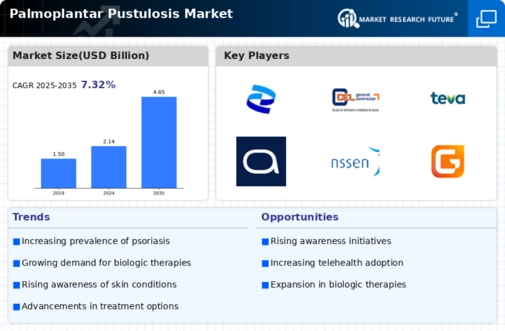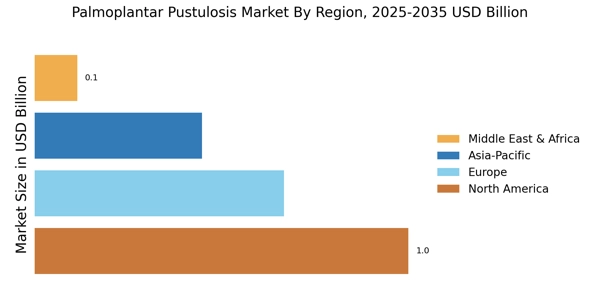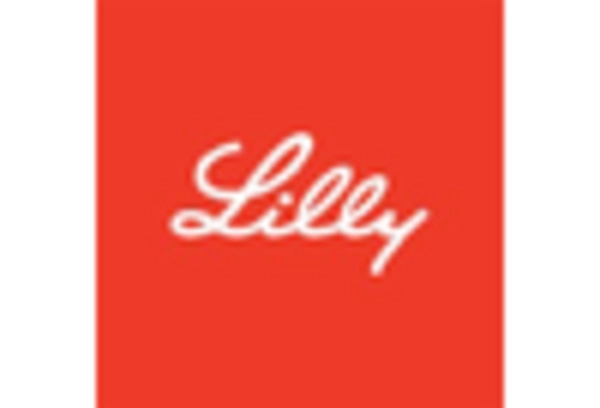Telehealth Services Expansion
The expansion of telehealth services is emerging as a significant driver for the Palmoplantar Pustulosis Market. With the increasing adoption of telemedicine, patients are now able to consult dermatologists remotely, which enhances access to care for those suffering from palmoplantar pustulosis. This shift towards virtual consultations allows for timely diagnosis and management of the condition, particularly for individuals in remote areas. As telehealth continues to evolve, it is likely to facilitate ongoing patient monitoring and follow-up care, thereby improving treatment adherence. Consequently, the market may see a rise in demand for therapies as patients engage more actively in their treatment plans.
Increased Awareness and Education
Increased awareness and education regarding palmoplantar pustulosis play a pivotal role in shaping the Palmoplantar Pustulosis Market. Healthcare professionals are becoming more knowledgeable about this condition, leading to improved diagnosis and treatment options. Patient education initiatives are also gaining traction, empowering individuals to seek timely medical intervention. This heightened awareness is likely to result in earlier diagnosis and treatment, which can significantly improve patient quality of life. Furthermore, as more patients become informed about available therapies, the demand for effective treatments is expected to rise, thereby propelling market growth.
Advancements in Treatment Modalities
The Palmoplantar Pustulosis Market is significantly influenced by advancements in treatment modalities. The introduction of biologic therapies, which target specific pathways involved in the inflammatory process, has revolutionized the management of this condition. These therapies have shown promising results in clinical trials, leading to increased adoption among healthcare professionals. Additionally, the development of topical treatments and systemic therapies has expanded the therapeutic options available to patients. As the efficacy and safety profiles of these treatments improve, the market is expected to witness a surge in demand. The ongoing research into novel compounds and treatment strategies further indicates a robust pipeline that could enhance patient outcomes and drive market growth.
Rising Prevalence of Palmoplantar Pustulosis
The increasing incidence of palmoplantar pustulosis is a notable driver for the Palmoplantar Pustulosis Market. Recent studies indicate that this condition affects approximately 1-3% of the population, with a higher prevalence observed in individuals with a history of psoriasis. This growing patient population necessitates the development of effective treatment options, thereby stimulating market growth. Furthermore, the rising awareness of skin disorders has led to more patients seeking medical advice, which in turn drives demand for specialized therapies. As healthcare providers become more informed about palmoplantar pustulosis, the market is likely to expand, with an emphasis on innovative treatment modalities that cater to the unique needs of affected individuals.
Growing Investment in Dermatological Research
Investment in dermatological research is a critical driver for the Palmoplantar Pustulosis Market. Pharmaceutical companies and research institutions are increasingly allocating resources to understand the underlying mechanisms of palmoplantar pustulosis. This focus on research is likely to yield new insights into the pathophysiology of the condition, potentially leading to the discovery of novel therapeutic targets. Moreover, government funding and grants for dermatological studies have seen a rise, facilitating the development of innovative treatments. As a result, the market may experience an influx of new products aimed at addressing the unmet needs of patients suffering from this debilitating condition.


















Leave a Comment